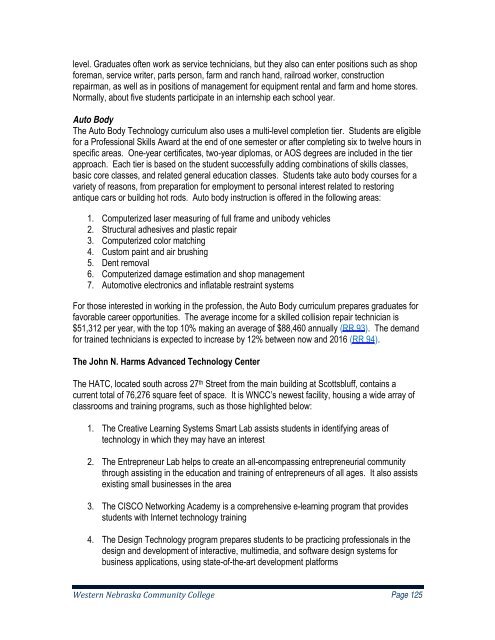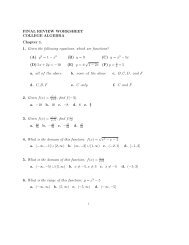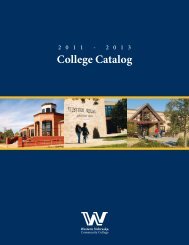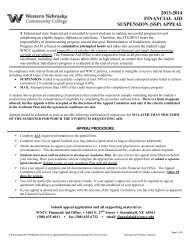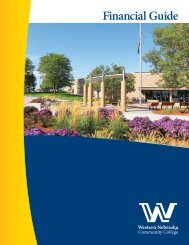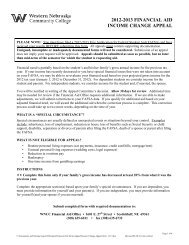WNCC 2010 Self-Study Report - Western Nebraska Community ...
WNCC 2010 Self-Study Report - Western Nebraska Community ...
WNCC 2010 Self-Study Report - Western Nebraska Community ...
Create successful ePaper yourself
Turn your PDF publications into a flip-book with our unique Google optimized e-Paper software.
level. Graduates often work as service technicians, but they also can enter positions such as shop<br />
foreman, service writer, parts person, farm and ranch hand, railroad worker, construction<br />
repairman, as well as in positions of management for equipment rental and farm and home stores.<br />
Normally, about five students participate in an internship each school year.<br />
Auto Body<br />
The Auto Body Technology curriculum also uses a multi-level completion tier. Students are eligible<br />
for a Professional Skills Award at the end of one semester or after completing six to twelve hours in<br />
specific areas. One-year certificates, two-year diplomas, or AOS degrees are included in the tier<br />
approach. Each tier is based on the student successfully adding combinations of skills classes,<br />
basic core classes, and related general education classes. Students take auto body courses for a<br />
variety of reasons, from preparation for employment to personal interest related to restoring<br />
antique cars or building hot rods. Auto body instruction is offered in the following areas:<br />
1. Computerized laser measuring of full frame and unibody vehicles<br />
2. Structural adhesives and plastic repair<br />
3. Computerized color matching<br />
4. Custom paint and air brushing<br />
5. Dent removal<br />
6. Computerized damage estimation and shop management<br />
7. Automotive electronics and inflatable restraint systems<br />
For those interested in working in the profession, the Auto Body curriculum prepares graduates for<br />
favorable career opportunities. The average income for a skilled collision repair technician is<br />
$51,312 per year, with the top 10% making an average of $88,460 annually (RR 93). The demand<br />
for trained technicians is expected to increase by 12% between now and 2016 (RR 94).<br />
The John N. Harms Advanced Technology Center<br />
The HATC, located south across 27 th Street from the main building at Scottsbluff, contains a<br />
current total of 76,276 square feet of space. It is <strong>WNCC</strong>’s newest facility, housing a wide array of<br />
classrooms and training programs, such as those highlighted below:<br />
1. The Creative Learning Systems Smart Lab assists students in identifying areas of<br />
technology in which they may have an interest<br />
2. The Entrepreneur Lab helps to create an all-encompassing entrepreneurial community<br />
through assisting in the education and training of entrepreneurs of all ages. It also assists<br />
existing small businesses in the area<br />
3. The CISCO Networking Academy is a comprehensive e-learning program that provides<br />
students with Internet technology training<br />
4. The Design Technology program prepares students to be practicing professionals in the<br />
design and development of interactive, multimedia, and software design systems for<br />
business applications, using state-of-the-art development platforms<br />
<strong>Western</strong> <strong>Nebraska</strong> <strong>Community</strong> College Page 125


